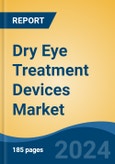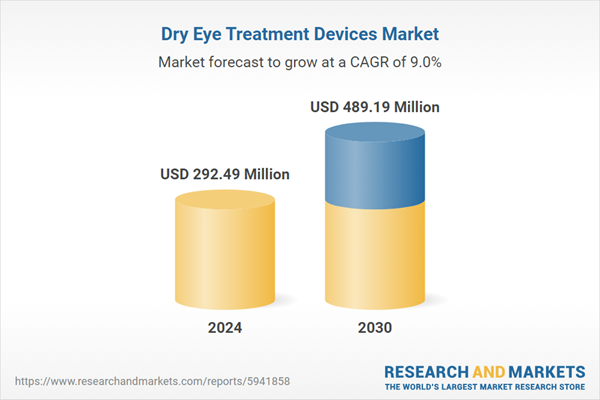Meibomian Gland Expression (MGX) is the fastest growing segment, North America is the largest market globally
Speak directly to the analyst to clarify any post sales queries you may have.
10% Free customizationThis report comes with 10% free customization, enabling you to add data that meets your specific business needs.
Key Market Drivers
The global dry eye treatment devices market is significantly driven by the increasing prevalence of dry eye disease worldwide. This rise is not only a result of enhanced diagnostic capabilities but also a direct consequence of modern lifestyle factors, including prolonged digital screen time and environmental influences. A considerable portion of the global population now experiences dry eye symptoms, which fuels a consistent demand for effective treatment solutions. According to Acta Scientific Ophthalmology, in April 2024, a study conducted in India revealed a prevalence rate of 67% for dry eye disease among participants, illustrating the substantial impact of the condition in large populations.Key Market Challenges
A significant challenging factor in the global dry eye treatment devices market is the high cost associated with advanced treatments and devices. This financial burden directly impedes widespread patient accessibility, particularly for individuals without comprehensive insurance coverage or in regions with constrained healthcare budgets. When the cost of therapeutic options becomes prohibitive, a substantial segment of the patient population cannot access necessary interventions, regardless of their clinical effectiveness. This creates a barrier to treatment adoption, directly limiting the potential market reach for innovative devices.Key Market Trends
The market for dry eye treatment devices is experiencing a notable shift towards consumer-centric solutions with the increasing proliferation of at-home and wearable treatment devices. This trend is driven by patient demand for convenience, reduced clinic visits, and continuous management of dry eye symptoms in their daily lives. These devices offer patients greater autonomy over their treatment regimens, potentially improving compliance and long-term outcomes.Key Market Players Profiled:
- MiBo Medical Group
- Sight Sciences, Inc.
- Lumenis Be Ltd.
- ESW Vision SAS
- Johnson & Johnson Vision Care, Inc.
- Alcon, Inc.
- Koninklijke Philips N.V.
- Leriva SA
Report Scope:
In this report, the Global Dry Eye Treatment Devices Market has been segmented into the following categories:By Technology:
- Broadband Light (BBL)
- Intense Pulsed Light (IPL)
- Meibomian Gland Expression (MGX)
- Combination (MGX+IPL)
By End Use:
- Hospitals & Clinics
- Ambulatory Care Centers
- Others
By Region:
- North America
- Europe
- Asia Pacific
- South America
- Middle East & Africa
Competitive Landscape
Company Profiles: Detailed analysis of the major companies present in the Global Dry Eye Treatment Devices Market.Available Customizations:
With the given market data, the publisher offers customizations according to a company's specific needs. The following customization options are available for the report:- Detailed analysis and profiling of additional market players (up to five).
This product will be delivered within 1-3 business days.
Table of Contents
Companies Mentioned
- MiBo Medical Group
- Sight Sciences, Inc.
- Lumenis Be Ltd.
- ESW Vision SAS
- Johnson & Johnson Vision Care, Inc.
- Alcon, Inc.
- Koninklijke Philips N.V.
- Leriva SA
Table Information
| Report Attribute | Details |
|---|---|
| No. of Pages | 185 |
| Published | November 2025 |
| Forecast Period | 2024 - 2030 |
| Estimated Market Value ( USD | $ 292.49 Million |
| Forecasted Market Value ( USD | $ 489.19 Million |
| Compound Annual Growth Rate | 8.9% |
| Regions Covered | Global |
| No. of Companies Mentioned | 8 |









